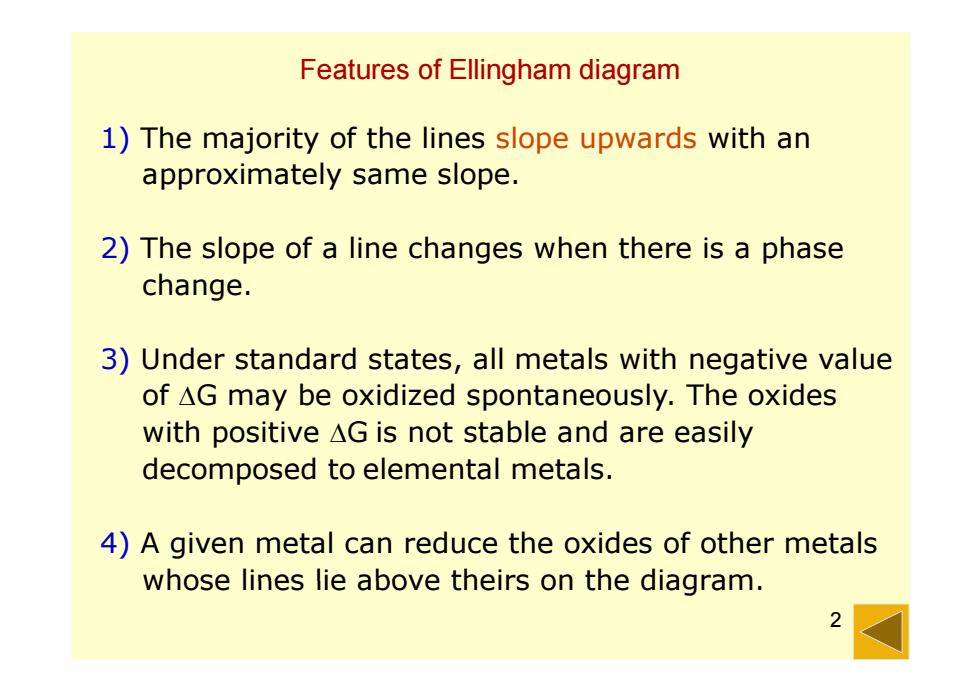
Construction of an Ellingham diagram An Ellingham diagram is a plot of AGo of reactions versus temperature(T).Since△Hand△Sare essentially constant with temperature unless a phase change occurs,and AG AH-TAS,the AGO~T plot can be drawn as a series of straight lines,where As is the slope and AH is the y-intercept. The Ellingham diagram is for metals reacting to form oxides (similar diagrams can also be drawn for metals reacting with sulfur,chlorine,etc.,but the oxide form of the diagram is most common).The oxygen partial pressure is taken as 1 atmosphere,and all of the reactions are normalized to consume one mole of O2
Construction of an Ellingham diagram An Ellingham diagram is a plot of G 0 of reactions versus temperature (T). Since H and S are essentially constant with temperature unless a phase change occurs, and G = H-T S, the G 0~T plot can be drawn as a series of straight lines, where S is the slope and H is the y-intercept. The Ellingham diagram is for metals reacting to form o ides x (simila diag ams can also be d a n fo metals (similar diag rams can also be d r a w n for metals reacting with sulfur, chlorine, etc., but the oxide form of the diagram is most common) The oxygen partial of the diagram is most common). The oxygen partial pressure is taken as 1 atmosphere, and all of the reactions are normalized to consume one mole of O 2 reactions are normalized to consume one mole of O 2. 1

Features of Ellingham diagram 1)The majority of the lines slope upwards with an approximately same slope. 2)The slope of a line changes when there is a phase change. 3)Under standard states,all metals with negative value of AG may be oxidized spontaneously.The oxides with positive AG is not stable and are easily decomposed to elemental metals. 4)A given metal can reduce the oxides of other metals whose lines lie above theirs on the diagram
Features of Ellingham diagram 1) The majority of the lines slope upwards with an app y p roximatel y same slo pe. 2) The slope of a line changes when there is a phase change. 3) Under standard states, all metals with negative value of G may be oxidized spontaneously. The oxides with iti ith positive G i t t bl d il is no t s t able an d are easily decomposed to elemental metals. 4) A given metal can reduce the oxides of other metals whose lines lie above theirs on the diagram whose lines lie above theirs on the diagram. 2

Richardson-Ellingham diagram Closer look at Ellingham diagram 16 4Ag+02=2Ag20 0 Slope =R Log Po2 300K Intereept→△G=0 -12 200K 700K
Richardson-Ellingham diagram Closer look at Ellingham diagram